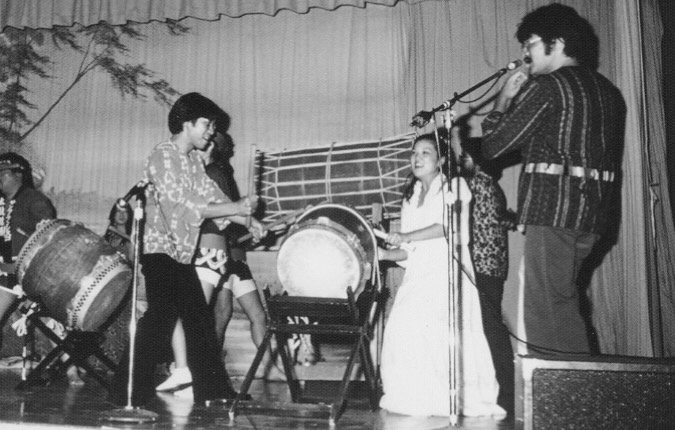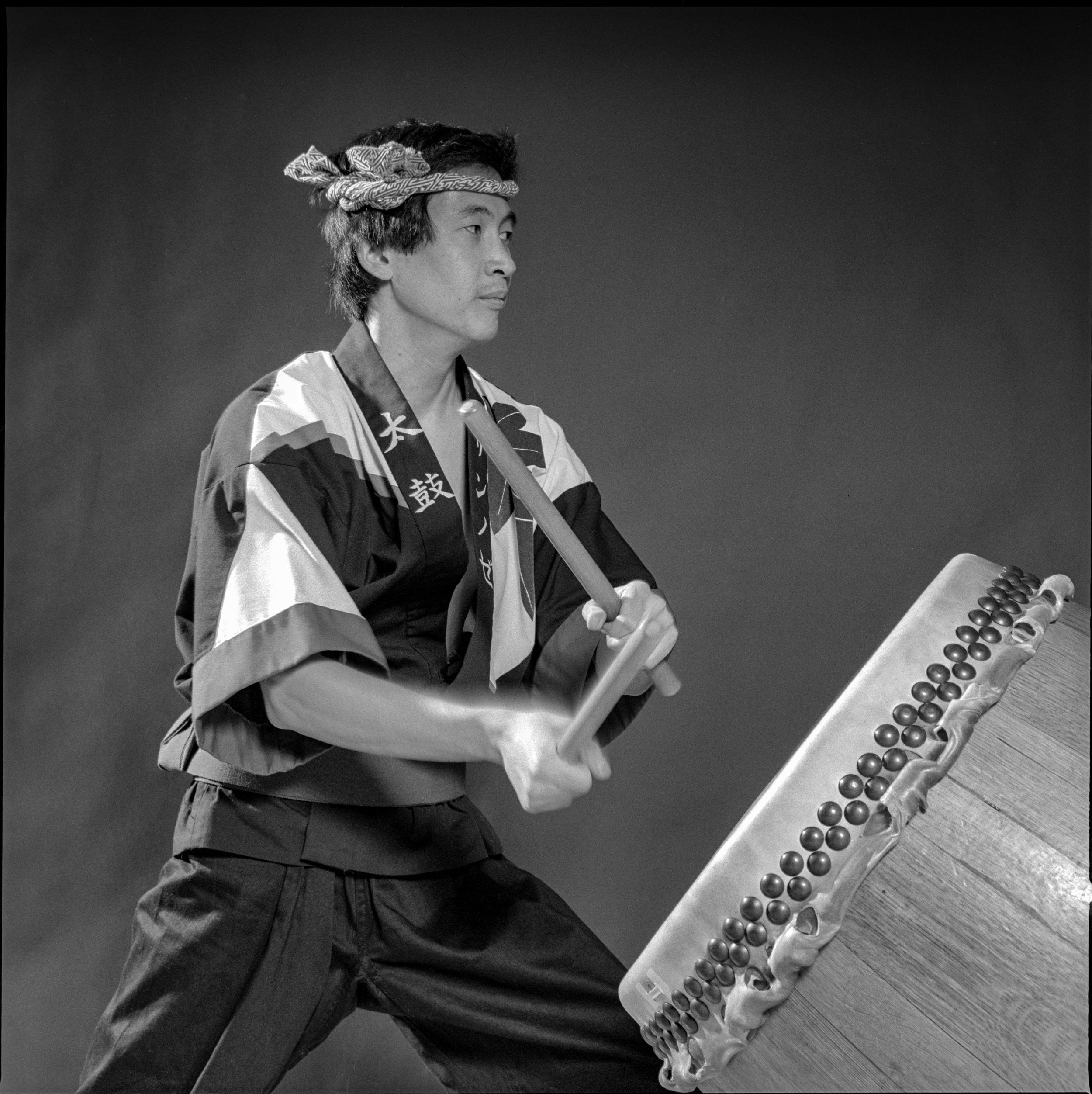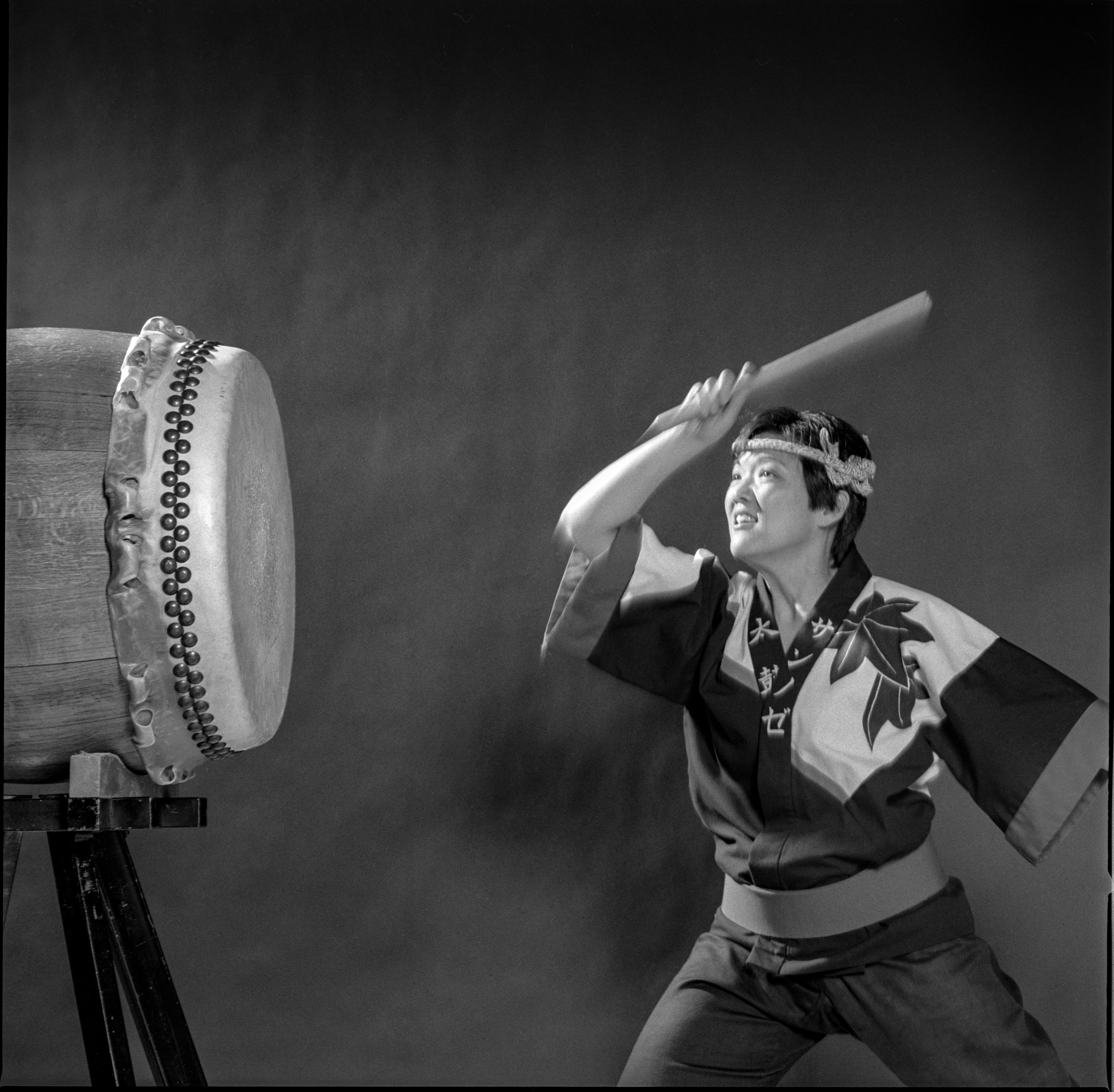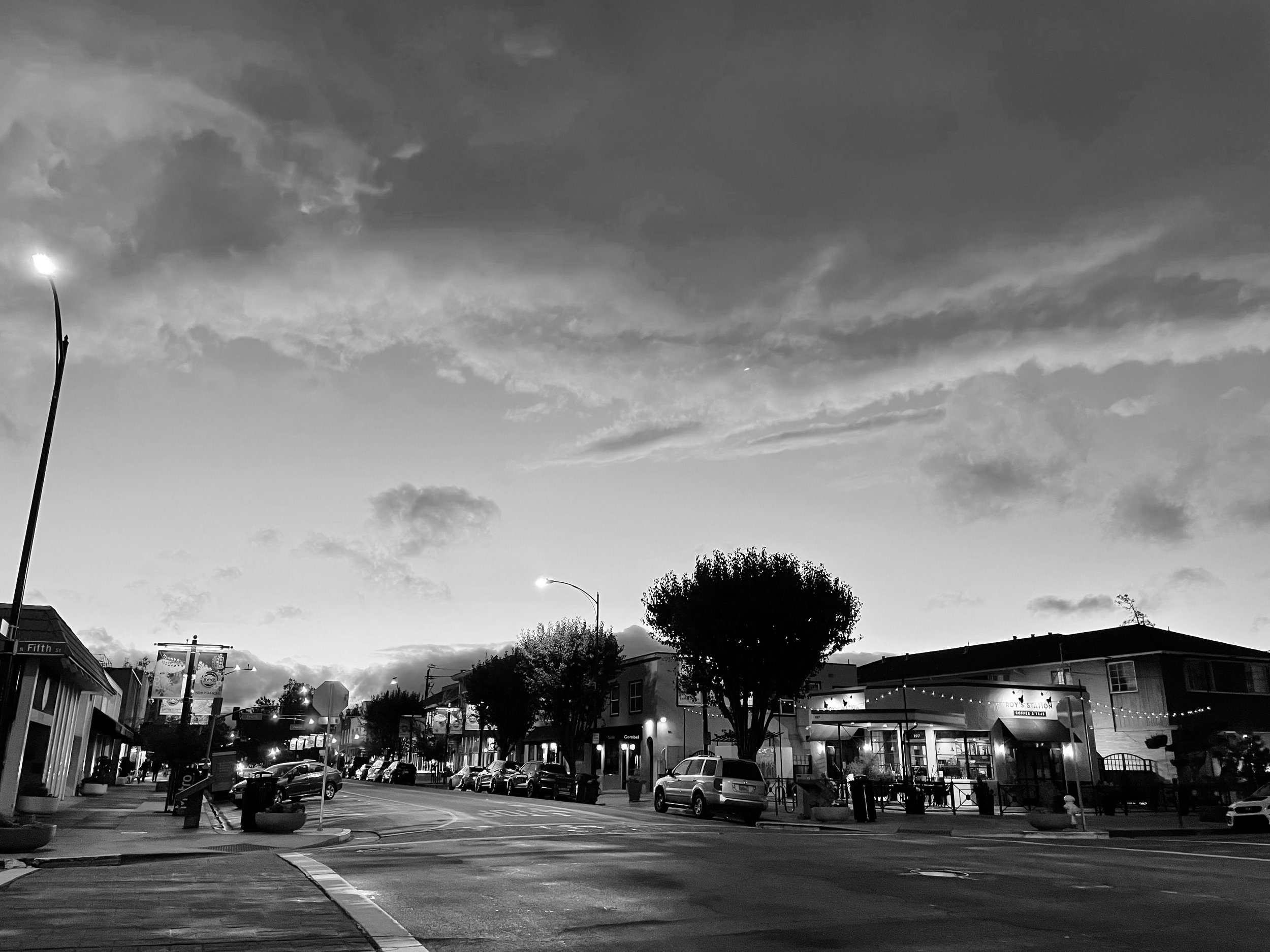
PJ & Roy’s Story
pj & roy“We don’t think of our lives as a ‘legacy’, but more of a continuum, something fluid, life-affirming, constantly changing and revitalizing.”
“Knowing we were stereotyped as quiet and reserved, we realized that taiko could be our voice and we could use the power of the drum to be loud and heard.”
Japanese American roots.
PJ and Roy Hirabayashi are 3rd-generation sansei Japanese Americans, born in the early 1950’s in California - PJ in San Rafael and Roy in Berkeley. They first crossed paths while attending California State University Hayward in 1969 and married in 1975.
Their first-generation grandparents immigrated to the United States from Japan before WWII into an unknown world of much uncertainty and promise. As they acclimated to life in America, they relied upon the values and core beliefs ingrained in them from their Japanese culture. These values were handed down in practice to PJ & Roy’s parents, who are second generation Japanese American. The core of their character is founded on these values and beliefs which they’ve abided by with unfaltering consistency.



Starting a taiko group from scratch.
It was in 1973 when Roy and two friends, Dean Miyakusu and Rev. Hiroshi Abiko, started San Jose Taiko as a grassroots community organizing tool.
They were seeking a way to encourage the youth at the local Buddhist Temple to come together, socialize, and learn about Japanese culture through a Japanese instrument. They chose taiko because they knew the community would be curious about it having seen and heard its power at obon festivals. San Jose Taiko became the third taiko group in North America and was destined to become one of the preeminent Asian American performing arts groups in the country.

Taiko
Pronounced “tie-ko”, taiko is the Japanese word for drum. Taiko in Japan dates back centuries and were originally made of hollowed out tree trunks and could weigh more than a ton. They were used in religious ceremonies, festivals, and to scare away pests and perpetrators on farmland. There are many variants of taiko today constructed with materials that include wine barrel slats, PVC pipe, and other human-made materials - even rubber tires.
Playing collectively as an ensemble was a phenomenon that started in Japan in the 1950’s. They called it kumidaiko or group drumming. PJ & Roy embraced and progressed this style of ensemble drumming. Through their diligence, they sought to constantly raise the bar on the possibilities of what a group of drummers could create musically.
“Our grandparents and parents taught us to persevere, to keep going, don’t quit.”
Finding an identity.
Taiko became more than just an instrument for PJ and Roy, it became their identity, their voice, their means to amplify social causes and unify their community.
Moreover, they created a body of music that was uniquely theirs using taiko to explore how to amplify social change, raise awareness of their Japanese American heritage, and become seen and heard amidst racial inequities during the 70’s and 80’s. Taiko was a bridge to connecting their views and voices with the world, it also kept them grounded in their Japanese roots. Through taiko, they could be loud.
Their music broke barriers.
It was important to both PJ and Roy early in their taiko careers that they develop a sound distinct from taiko music from Japan, yet maintain respect for that lineage.
They took a leap of faith and began writing music for taiko based on their personal musical influences, what they were hearing on the radio - jazz, rock and roll, classical, Afro-Cuban, soul R&B. Their songs helped usher in a whole new category of taiko music they could claim as having Japanese American persuasion. Taiko gave them the springboard of confidence to play for the social causes they felt strongly about including freedom of speech, the anti-war movement, and racial injustices like Asian hate.

A cherished and indelible part of San Jose Taiko’s 50+ year legacy.
PJ & Roy are best known as North American taiko pioneers, performers, mentors, and composers who catalyzed taiko as an Asian American musical genre during their 38 years leading performing arts company, San Jose Taiko, which Roy co-founded in 1973.
In their respective former roles as Executive Director and Artistic Director, Roy and PJ were instrumental in establishing the practices, rituals, work ethic, originality and performance excellence that San Jose Taiko is known for and often emulated today. In 2023, Roy and PJ celebrate their 50 years of playing taiko and San Jose Taiko marks their 50-year anniversary.



A culture of values, principles, and aesthetics.
In their nearly 4 decades with San Jose Taiko, PJ and Roy put in great effort to create a culture based on equitable leadership, core values rooted in Japanese heritage, simple principles to learn taiko, and an appreciation for aesthetic beauty.
It was important to them that everyone in the performing company take part in everything from sweeping the floors to maintaining and building the drums, to teaching workshops and community outreach classes, to giving their best at all practices and performances.
“It was hard for us to drop the word ‘Group’ after ‘San Jose Taiko’ in the early days because the group aspect was so important to us, every person making up the whole, everyone having a voice.”
Seminal achievements.
The Hirabayashi’s have gained an international reputation for the music they’ve composed and arranged for taiko, for their longevity as committed artists, and for their dedicated community building.
Along with other taiko pioneers, they helped forge taiko as an Asian American genre of folk music through their 38-years as leaders and performing members of San Jose Taiko.
A few of their most noted accolades include:
2011 National Endowment for the Arts Heritage Fellows
2012 Consul General of Japan, Hiroshi Inomata, Certificate of Commendation for Community Service
2014 JACL The Japanese American of the Biennium Award
2014 SVCreates Legacy Laureate Award (PJ | Roy)
2016 San Jose City Cornerstone Awards

Sharing the exuberance, excitement, and elation of playing taiko is one of their greatest joys.
Continuing their advocacy for taiko and the arts.
The vitality of taiko and the arts remain top of mind with the Hirabayashi’s as they continue to be a force for arts activism, social justice, and community building.
San Jose Taiko continues to thrive as a performing arts organization today with much credit to PJ and Roy for the outpouring of energy they devoted to its growth.
Looking back, community remains their most important achievement.
Their relevancy is forever recognized in defining and progressing the taiko art form and will be carried forward with the adrenaline of thousands of taiko groups around the world.

“San Jose Japantown is our home, our heart, our family. It is forever a part of who we are.”
pj“Taiko and San Jose Japantown are inextricably linked. It’s given me my sense of belonging.”
roy“It’s really providing that cultural heritage, the sense of pride within our identity…”
PJ & roy“We are reminded of the hardships and challenges that our parents and grandparents endured through the memorials, artifacts, and tributes throughout Japantown.”
pj & roy“We hope our work will continue to bridge and strengthen communities around the power of the arts and especially taiko.”




